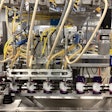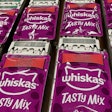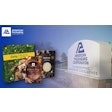No doubt about it, organic is hot. The organic industry has experienced double-digit growth each year since 1990, according to the Organic Trade Association (OTA), and is expected to continue growing. Organic petfoods comprise one of the hottest categories, with sales increasing 46% in 2005 over the previous year.
And yet, organic foods for humans represent just 2.5% of total US food sales, OTA says. For organic petfoods, the penetration is minuscule: just 0.09% of overall US petfood sales.
That means the only way to go is up. But no smart, responsible petfood manufacturer could be blamed for hesitating to jump on the organic bandwagon or commit a larger portion of its product mix to organic.
Consumer confusion
OTA exists to promote and support the organic industry, but even it expressed concerns in a 2005 report, The Past, Present and Future of the Organic Industry (www.ota.com/pics/documents/Forecasting2005.pdf). "Many issues could cloud the future of organic products, including consumer confusion about organic definitions," it said.
While surveys often show consumers purchase organic products because of a perception that they're healthier and environmentally friendly, those are people who are already well educated about, and regular users of, these products. And that's a minority of consumers, only 10% of respondents to the 2005 annual Whole Foods Market Organic Trend Tracker survey (see www.wholefoodsmarket.com/company/pr_11-18-05.html). Just 31.5% of people who don't consume organic products agree those foods have more nutrients; only 35% of this group believe organics are better for the environment.
But the Whole Foods survey showed 75% of respondents cited cost as the main reason for not buying more organics. Another important (and related) reason was availability of organic products, given by 46% of respondents.
Wanted: more farmland
For producers, availability is a major concern in terms of agricultural supply, especially farmland. Currently less than 1% of farmland around the world is certified organic, according to OTA. While organics experts believe that could expand to about 12.6% by 2025, any increase is dependent on government support, especially in the US.
OTA cites a report, The World of Agriculture: Statistics & Emerging Trends 2006, which says the amount of farmland under organic management worldwide grew about 5 million hectares in a single year (to a total of 31 million hectares). Three million of those newly organic hectares are in China, which may not necessarily help producers in other parts of the world.
What to do?
The recent Pet Food Institute (PFI) annual meeting in Chicago, Illinois, USA, brought to light several key points:
More and more information for producers is available about organics, and much of it includes pet products. For example, the September issue of Natural Food Network Magazine includes an article about natural and organic pet supplements. The Natural Food Network website (www.naturalfoodnet.com/nfnportal) offers resources such as a directory of organic suppliers.
Your industry, through PFI, is working with the US Department of Agriculture National Organic Program (NOP) to develop a petfood standard within the NOP standards. This could help ensure better consistency among organic petfood products and labels, which in turn could help drive consumer interest in, and knowledge about, organics for pets.
Despite current obstacles, most experts predict organic products will become ever more available, cheaper and more mainstream. In its 2006 Pet Food in the US report, Packaged Facts projects US sales of organic petfoods will grow at a compound annual rate of 25% through 2010. Will you be part of that growth?














